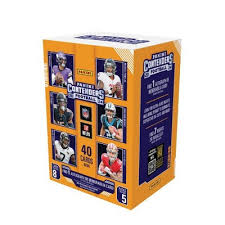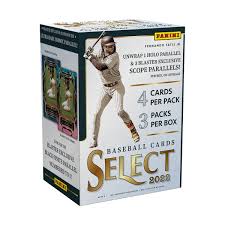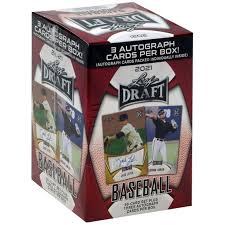

One of the interesting things about baseball card collecting is that there are so many different ways you can collect. Some purchase cards that will be in their collection for mere hours. Others plan to have a particular card for decades.
But what are the different types of card collectors? Which one are you? Which one am I?
A note that we’re not talking about a collector’s budget here. We all know there are collectors on a tight budget high rollers, and every level in between. Regardless of someone’s collecting budget, they can take any of the approaches below (or a hybrid) to their collection.
Also, these approaches apply to all types of collectibles, including graded cards, raw cards, unopened boxes, complete sets, and more.

Cardlines isn’t here to judge your collecting approach. We’re here to celebrate it! So, if you’re reading looking for us to tell you the “right” and “wrong” way to collect, you may be disappointed. As long as you’re staying within your budget, being kind to your fellow collectors, and having fun, you’re probably doing things “the right way”.
Sports card collecting is an interesting hobby. You can argue about whether the value and rise and fall in that value makes the hobby more fun or is a negative aspect of collecting. But the simple fact that we can build value in our hobby sets it apart from many hobbies.
For example, if your hobbies are camping, hunting, fishing, seeing live music, attending live sports or shows, or any number of other things people do to enjoyably pass the time, you’re spending money.
But you’re not worried about creating or adding value. You’re simply spending money for entertainment. So, the fact that you can make money from your hobby is pretty interesting. So is the fact that people would expect to.
Other hobbies have the “value” component, including stamp and coin collecting, of course, but these are more of an exception than a rule. Collecting cards, for profit or not, likely isn’t worth it if you’re not enjoying yourself. If you’re having fun and making some money, that’s pretty awesome.
The first type of collector isn’t thinking about the money. They just love sports, love cards, and love the players they’re collecting. They’d rather have a 5,000-count box of mixed cards to sort through than a $100 card.
Some of these collectors just project joy about cards. They can talk gleefully about a stack of junk wax commons that are worth maybe a couple of dollars. I find the time I spend with this type of collector incredibly refreshing.
Of course, there’s also the “good old days” curmudgeon who will complain your ear off talking about their disdain for modern packs and box prices, parallels, manufactured scarcity, and any number of perceived slights that most of the people who are “collecting wrong” might enjoy.
Those folks are less fun to talk to and tend to stick to their echo chamber tribe. But hey, if they’re having fun complaining, they’re not doing it wrong either.
An interesting subset is people who say they don’t care about value, and bemoan the prices some cards have reached, making them harder to acquire.
But then they’ll go spend thousands on some rare pre-war gem because they like it. I guess that’s a pure hobby if you’re not thinking of the value of such a significant investment.
These are collectors who are looking to quickly “flip” a card for profit. Their target to hold a card is measured in hours, days, or maybe a week or two. They may walk into a card show, buy a card, and look to sell it before they head home.
They look for players and cards that are underpriced, grab them, and then quickly sell them before prices stabilize or drop. These are the “day traders” of the collecting world. They are the folks buying cards the day before the Super Bowl and listing cards mid-way through the game.
This type of collector is sometimes maligned by other collectors. Sure, the “flipper bro” who’s been shouting about their collecting exploits since early 2020 is a tired trope, but that’s only a small subset of this type of collector. And let’s be honest, card collecting isn’t the first thing “bro culture” has sullied, and it won’t be the last.
But to do this successfully any time other than the 2020-2022 market surge requires knowledge of the sport, an eye for value, and a knack for good timing.

Compared to the short-term flipper, a longer-term flipper will likely hold a card from a couple of weeks to a few months. Maybe even close to a year depending on the situation. While still hunting for profits, these collectors are looking at both individual players and sets, plus larger seasonal ebbs and flows.
Maybe it’s buying a player who looks ready to break out. Maybe it’s buying a set that the player’s rookie card is in that is likely to get a lot of attention soon. Maybe it’s buying in the off-season or during a short-term injury to buy a price drop.
The stock market comparison here is the investor who makes short-term bets on individual companies, industries, or funds. Based on expected profits, temporary market forces, or other factors, they look to extract profit in the mid-term.
A long-ago example of this: Back in around February of 1998, I bought a few 1985 Topps Baseball complete sets for around $35 delivered. That set of course includes the rookie card of Mark McGwire, who’d hit 50+ home runs each of the last two seasons.
It felt like going into 1998, an expansion year, there was a chance for something special to happen. Sure enough, by September of that year, McGwire rookie cards were selling for $200 or more even in raw form.
Again, this isn’t always easy. There will be wins and losses, and there are certain levels of skill and luck involved. If you’re working within your “hobby budget” and enjoying the journey, though, this can be both fun and profitable.
If the first two collectors on our list can be compared to day traders and individual stock buyers, then the Prospector is the investor who only buys into Initial Public Offerings (IPOs).
Catching the next big thing before it gets big has long been a draw. Getting in on the hottest young prospect before their card prices shoot up can be a path to significant profit. But it is also fraught with risks. Prospects can break your heart and your bottom line.
I honestly feel that this particular collecting niche has become more difficult in recent years. The number of cards a player has before they make their big league debut has increased exponentially over the last decade or two.
Also, prospect card values tend to be high much sooner than in the past. The window to buy low with the hope of eventually selling high is smaller, and the buy-in prices are higher.
That being said, if you’re staying within your budget and enjoying the ride, there’s a certain excitement in prospecting that has real appeal. The misses may sting, but the hits are incredibly satisfying.
Prospect prices have always been interesting to me. Oftentimes, the cards of the hottest prospects cost more than the rookie cards of established stars from decades prior.
Betting on a prospect being the next Gerrit Cole or Bryce Harper can sometimes cost more than just buying the rookie card of the established star. I don’t do much prospect buying.
I tend only to buy prospects of players of my favorite team. That way, my losses hurt double but my hits pay back double (as the player does both well or poorly in terms of card value AND on-field performance). It’s probably a bad investment approach, but it makes me more invested in the outcomes.

As we move down the list, the theme becomes less about “immediate gratification” and more about “long-term value”. In the stock market, this investor is buying into companies they believe in for the long term. For the card collector, the idea is the same.
Perhaps it’s buying the rookie cards of a player who is an established star with a chance to become a Hall of Famer. Or cards of a likely Hall of Famer after they retire but before they appear on the ballot.
It’s about buying the natural dips when other collectors are off chasing the latest shiny object and holding until demand and prices increase.
There’s profit to be had here, although it’s more potential for a slow increase over time than a huge, immediate jump.
Of course, we’re investing in cardboard pictures of living people, so there’s always the chance of losses. Injuries, ineffectiveness, and off-field problems can torpedo what looked like a good buy (ask anyone who’s bought cards of Alex Rodriguez, Omar Vizquel, or Robinson Cano).
As an example, I’ll call out the 1994 Bowman Billy Wagner in PSA 9. I bought my copy back in January of 2018 for $10 shipped. Recent comp prices have been in the range of $125-250. No, I’m not getting rich making $200 over six years, but a 20-25x price increase in that period is nothing to shake a stick at, either.



The next collector on analogous to the long-term buy-and-hold investor in blue chip stocks and funds. Often this person is buying vintage cards of players who are long ago retired and in many cases, deceased.
The investment here is a long-term bet on certain players and certain cards always being desirable. It’s also a bet on the long-term viability of the hobby and ever moving pace of value over time. Babe Ruth hasn’t done anything to change his card value in many decades.
Yet his cards continue to demand higher and higher prices over time. The same can be said for Willie Mays, Jackie Robinson, and any other of a list of long-retired stars of yesteryear whose cards are still very much in demand.
While there will be temporary ups and downs in value for cards of this nature, they’re the safest investments long-term. The gains will be small but gradual and trend upwards over time.

Of course, you can be multiple types of these collectors at different points, or even at the same time. These hybrid approaches keep things fresh and give you lots of options for what to buy and sell.
I’m a hybrid of the Long Term Value and Blue Chip categories. I love buying up cards from the 1940’s to 1980’s of retired stars and Hall of Famers. But I also buy plenty of cards of active and recently retired players who I think will someday make the Hall of Fame.
In either case, I’m buying to hold for the long term, and between the two I should get a steady if not large return. The risk profile supports that, though, and most importantly, these are the cards I most enjoy.
But what about you? Knowing what kind of collector you are can help you stay focused on your collecting pursuits. It can also help you understand what you most enjoy, and how you might best get value from your collecting journey.
So, what type of collector are you? Or are you a hybrid of several approaches? Did we miss any? Tell us what’s on your mind at Cardlines on Twitter.
There are many different ways to collect sports cards. This is a truth that should bring us together, not drive us apart. The variety of options provides every one of us a path to profit, value, and enjoyment of this great hobby we share.
We hope you enjoyed this Cardlines guide to the different types of card collectors: Which one are you?
2025 Topps All Star Game Mega Box Product Review
Ripping the new Topps All Star Game mega box.
Is this new sports card store the BEST VALUE around?
I Tested eBay Auction Promotions So You Don’t Have To!
I deep-dove on Fanatics Collect so you don't have to (but should you?)
Panini is launching a WNBA Product at $30,000!?
Topps Chrome 2024-25 Basketball: Honest Review and Notes
Did you know this SECRET about PSA slabs? #sportscard #tcg






2022 Topps Heritage Baseball Blaster Box Configuration: 7 Packs per Box – 9 Cards per Box. Plus 1 extra pack.










Keep up on breaking Sports Card News, our latest articles, product specials and exclusive content with expert analysis of hobby trends.

© Copyright 2025 - All rights reserved Cardlines.com / Media Techs LLC - Sports Card News, Reviews, Releases and BREAKS - #thehobby.
Important: When you click on links to various merchants on this site and make a purchase, this can result in this site earning a commission. Affiliate programs and affiliations include, but are not limited to, the eBay Partner Network.
The Ultimate 2024 Football Card Brand Tier List (Panini vs. Topps and more!)
Cardlines 11 hours ago